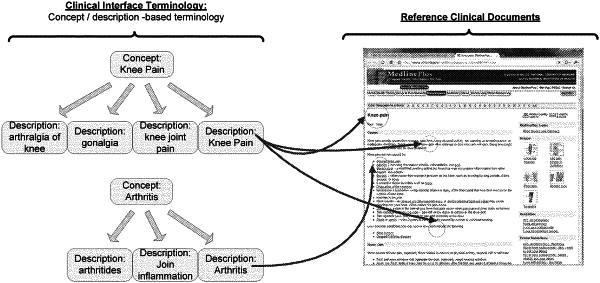| CPC G06F 16/2365 (2019.01) [G06F 16/24578 (2019.01); G06F 16/36 (2019.01)] | 23 Claims |

|
1. A computer-implemented process for content and workflow management, comprising:
populating a database concept table with a plurality of concepts, each of the concepts comprising both one or more concept terms and a unique concept identifier; and
populating a database description table with a plurality of descriptions, each of the descriptions comprising both one or more description terms and a unique description identifier;
wherein each concept resides hierarchically under a domain and further is unique within a given domain,
wherein a description is an alternative way to express an associated concept, and
wherein the descriptions have a many-to-one relationship with each of the plurality of concepts, such that each description has a concept, each concept has at least one description, each concept has a respective description comprising all of the same one or more terms as the concept's one or more terms, and each description matches to only one respective concept;
generating a plurality of description-concept pairings by relating each description to a respective concept;
using the description terms to identify portions of content that satisfactorily match to one or more of the descriptions stored in the database description table populated with the plurality of descriptions, wherein the content is digital content; and
creating a tag for each portion of the content that is identified from the satisfactory description match, the tag directly mapping the portion of the content to a respective one of the matching one or more of the descriptions in the database description table, the tag including the unique description identifier relating to the satisfactory description match, an identifier of the content being tagged, and a reference to a location of the identified portion within the content;
repeating the identifying and creating steps for a plurality of items of content;
receiving a search query; and
finding one or more satisfactory description search matches by comparing the search query against each tag, the comparing step using the description-concept pairings to identify satisfactory description matches including other descriptions sharing the same concept as the search query, and, by extension, one or more satisfactory content matches.
|